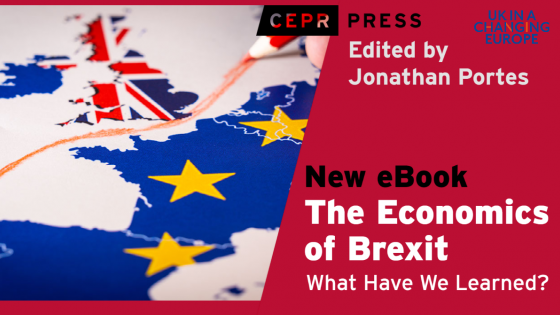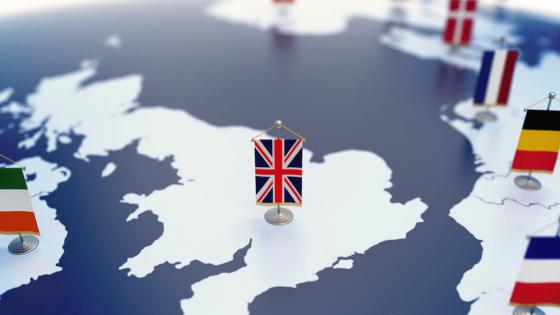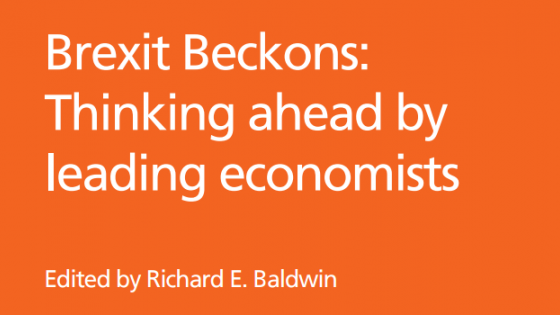Prior to the referendum of June 2016, there was a clear consensus among economists about the likely impacts of leaving the EU (Chadha et al. 2016). By facilitating trade, capital flows, and migration within Europe, EU membership had increased UK economic growth and per capita GDP over the four decades since the UK joined the Common Market in 1973; reversing this would, correspondingly, reduce future growth.
Some forecasters who also predicted economic gloom as a direct result, not of Brexit itself but of the referendum result, did so on the basis of the expected impact on financial markets, business and consumer confidence (HM Treasury 2016). But they were (mostly) wrong. While the pound did indeed fall much as expected, market interest rates did not rise, and neither the equity market nor house prices fell. More importantly, after an initial shock to confidence, businesses and consumers largely shrugged off the result. The labour market remained strong, and unemployment actually fell slightly.
However, as I noted then (Portes 2017), the failure of economic forecasters to predict the short-run macroeconomic impacts of the referendum result – where the key transmission mechanisms were market, business, and consumer confidence and uncertainty – did not necessarily invalidate the long-run predictions of the damaging effects of restrictions on trade and migration, any more than the uncertain record of short-term weather forecasts invalidates models of the impact of greenhouse gas emissions on the climate.
A new eBook, produced by VoxEU/CEPR and UK in a Changing Europe, brings together leading academic researchers on trade, immigration and political economy to assess what we have learned, 18 months on from its implementation, about the impacts of Brexit on the UK economy (Portes 2022a).
Read The Economics of Brexit: What Have We Learned?, edited by Jonathan Portes, here
Between the referendum and the election of a majority Conservative government committed to a ‘hard’ Brexit in late 2019, the economic debate, like the political one, focused on the nature of the future trading relationship between the UK and the EU, as well as the related issue of the post-Brexit migration system. Here, the economic consensus was again clear: the UK’s economic interests (and the best observers were clear that they were referring simply to economic interests) would be best served by seeking to remain in the Single Market. As Richard Baldwin put it in an earlier CEPR eBook, “[t]he alternative that seems most sensible from an economic perspective is the Norway option”, noting that this would require the UK government to accept the continuation of free movement (Baldwin 2016).
However, the UK government, first under Theresa May and then Boris Johnson, rejected the European Economic Association (EEA) model, making clear “we are not leaving the European Union only to give up control of immigration” (May 2016). In that sense, as Portes (2022b) argues, the politics of immigration and free movement were the key driver of the shape of the UK–EU post-Brexit economic and trading relationship, as now enshrined in the Trade and Cooperation Agreement (TCA), agreed in December 2020 and implemented on 1 January 2021.
The TCA, while providing for zero tariffs and quotas on traded goods, contains very few provisions of any economic significance relating to the mutual recognition of regulatory standards, regulatory equivalence for services (including financial services), or labour mobility. Compared to membership of the EU (and of its Single Market and Customs Union) it therefore implies a major increase in trade barriers and trade costs in goods and services, as well as new restrictions on migration flows. As Adam Posen and Lucas Rengifo-Keller put it in their chapter, the UK was far more open to trade and immigration, and attractive to FDI, before Brexit. Or, as they pithily summarise, “Brexit means that the UK has declared a trade war on itself”. And with the interregnum between the referendum and the implementation of the TCA over, we can now look at data, albeit early and noisy, on the results.
Trade in goods
Two of the chapters focus on trade in goods. Rebecca Freeman, Kalina Manova, Thomas Prayer and Thomas Sampson analyse both the period between the Brexit referendum and the end of 2020, and the first year of trade under the TCA. On the first, they find no evidence of a statistically or economically significant decline in the UK’s trade with the EU relative to the rest of the world prior to the implementation of the TCA. By contrast, the actual introduction of the TCA caused a major shock to UK–EU trade, with a sudden and persistent 25% fall in UK imports from the EU, relative to the rest of the world. There is only a smaller and temporary decline in relative UK exports to the EU, but nevertheless a large and sustained drop in the number of trade relationships between UK exporters and EU importers.
Similarly, Jan David Bakker, Nikhil Datta, Josh De Lyon, Luisa Opitz, and Dilan Yang find that impacts were quite different by sectors and destinations. First, they note that UK imports from the EU have fallen both in absolute terms since the referendum and relative to imports from non-EU countries since the TCA’s implementation. This is not the case for exports, where trade with the EU has followed a similar path to trade with non-EU countries so far. However, a more detailed analysis reveals substantial heterogeneity across products in the effect of Brexit on trade flows. Focusing on the food industry, the authors show that products more reliant on imports from the EU in 2015 saw larger increases in prices than those less reliant on the EU both immediately after the 2019 election – when it was confirmed that the UK would leave the Single Market and Customs Union – and the implementation of the TCA in January 2021. Using a differences-in-differences approach, they estimate a 6% increase in food prices due to Brexit over the two years to the end of 2021.
The chapter by Meredith Crowley, Lu Han and Thomas Prayer explores the implications of preferential trade arrangements for market power, pricing, and consumer welfare. They show that in imperfectly competitive markets, tariff reduction impacts prices not just directly but also by encouraging the entry of new exporters via competitive pressures. Corresponding, increased tariffs (or other trade barriers) is likely to have the reverse effect. While the data used by both Freeman et al. and Bakker et al. reflect only the first year of the post-Brexit trading arrangements, their results are certainly consistent with the predictions of Crowley et al.
Trade in services
Data on services trade are slower to arrive and less granular than those for goods. Nevertheless, Jun Du and Oleksandr Shepotylo show, using a synthetic differences-in-differences approach, that, in contrast to trade in goods, the period between the referendum and the implementation of Brexit did see a significant Brexit-induced fall in UK service exports, amounting to about 6% in 2019. There is no evidence to suggest that UK businesses have redirected exports from the EU markets to those outside the EU. The apparent beneficiary is Ireland, which has experienced rapid growth in its service exports over the same period.
Focusing on financial services, Sarah Hall also finds some evidence of a decline in UK exports to the EU, and of the relocation of some financial service activity to locations elsewhere in the EU, although no one centre has gained disproportionately. And while perhaps 10% of total assets of the UK banking system have moved, a far smaller proportion of jobs or value added has been lost. Looking forward, the key issue is the extent to which the UK regulatory regime diverges from that in the EU, and the likely consequences.
Migration
If the politics of immigration and free movement were the key drivers of both the Brexit vote and the decision to leave the Single Market, what of the economic impacts of the new post-Brexit immigration policy? In my chapter, I describe the new system, which does indeed represent a very significant tightening of controls on EU migration compared to free movement. However, compared to the current system – and in contrast to earlier predictions – the new proposals represent a considerable liberalisation for non-EU migrants, with lower salary and skill thresholds, and no overall cap on numbers. So, the new system does not represent an unequivocal tightening of immigration controls. Rather, it rebalances the system from one which was essentially laissez-faire for Europeans, while quite restrictionist for non-Europeans, to a uniform system that, on paper at least, has relatively simple and transparent criteria. And this analysis appears to be borne out in data on the operation of the system in its first year, where there has been a significant rise in work visas issues compared to pre-pandemic levels, particularly in the health sector, and an even larger rise in the number of international student visas. I conclude that there is some cause for optimism about the economic impacts of the new post-Brexit UK immigration system.
Madeleine Sumption concurs with my analysis of the overall impact of the new system and focuses in particular on the impact of this ‘rebalancing’ on low wage sectors that were previously very dependent on EU workers who could move to the UK under free movement rules. She finds that many employers in industries that previously relied heavily on EU migration are finding it difficult to recruit, although Brexit and the end of free movement are not the only factor at play here, with broadly similar patterns also observed in other high-income countries.
Perhaps surprisingly, despite anecdotal evidence, there is very little evidence so far that shortages are translating into sustained higher wages in the affected sectors. Indeed, she notes that the hospitality industry, which saw the largest percentage declines in EU citizen employment from June 2019 to June 2021, was also one of the industries with the lowest wage growth during that period.
Conclusions
The analyses described above are very much a preliminary and incomplete account of the economic impacts of Brexit. In some cases, they raise as many questions as they answer. For example, why have UK imports of EU goods fallen so sharply, while UK exports are much less affected, when (in contrast to the EU) the UK has not yet introduced the full panoply of import controls provided for under the TCA? Why has the large fall in the number of EU workers in some sectors – and a corresponding rise in vacancies – not translated into higher wages, at least in relative terms? Nevertheless, the overwhelming weight of the evidence presented suggests that – very much as economists predicted – Brexit has made the UK a less open economy, reduced UK trade in both goods and services, and increased prices for some products.
However, as Thiemo Fetzer points out, aggregate impacts are not the whole story by any means. His analysis suggests not only that the costs of Brexit are very unevenly distributed, but that, perhaps paradoxically, those areas that voted most heavily for Brexit are the worst affected, while London has escaped largely unscathed, at least so far. Both Posen and Rengifo-Keller and Fetzer propose distinct, but complementary, strategies to address both the economic and political implications of Brexit. Building on the relative liberalism of the post-Brexit migration regime, Posen and Rengifo-Keller argue for the UK to abandon its post-imperial delusions and to follow rather than try, and inevitably fail, to ‘lead’ globally in an economic sense. Instead, it should focus on attracting skilled labour and productive capital, combined with a re-engagement with the EU, based on regulatory convergence. Meanwhile, Fetzer suggests both much greater devolution and greater redistribution, geographically and between generations as well as from rich to poor. The alternative, both suggest, is a poorer, more insular and more divided country.
References
Baldwin, R (ed) (2016), Brexit Beckons: thinking ahead from leading economists, CEPR Press.
Chadha, J, P Johnson and J Van Reenen (2016), “Leaving the EU would almost certainly damage our economic prospects”, NIESR blog, 20 June
HM Treasury (2016), “The immediate economic impact of leaving the EU”, 23 May
May, T (2016), “The new centre ground”, speech at the Conservative Party Conference, 2 October 2.
Portes, J (2017), “The Weather is not the climate”, UK in a Changing Europe, 19 January.
Portes, J (ed) (2022a), The Economics of Brexit: What Have We Learned?, CEPR Press.
Portes, J (2022b), “Immigration and the UK economy after Brexit”, Oxford Review of Economic Policy 38(1): 82–96.



